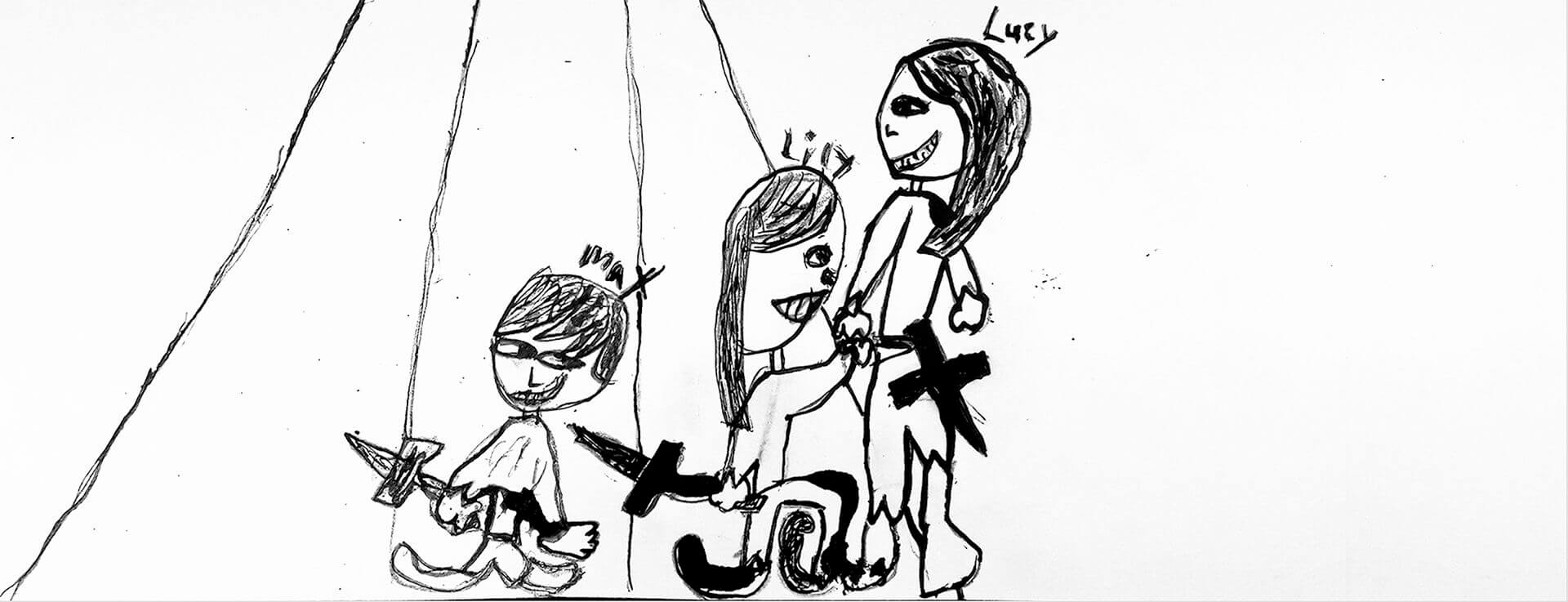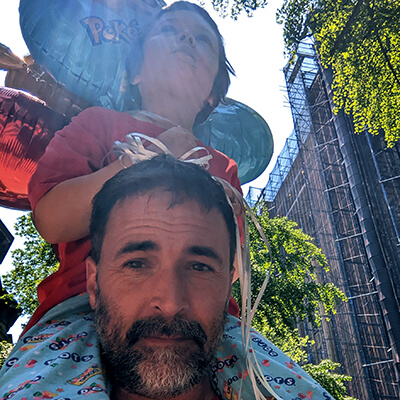It was springtime at the end of fourth grade, and a group of us eagerly gathered around the dictionary. The boy that had brought us there flipped through the pages to settle something once and for all. Finding it, he proudly pointed and declared, “There! Dildo: a fake penis.” And sure enough, he was right. Before us written in black and white in the giant Webster’s Dictionary in the elementary school library for us all to see — at nine years old — we had our first brave encounter with “dildo.”
In this article I am starting from the perspective that children are sexual beings who are typically aware of their own gender identity from an early age and that childhood innocence is a fallacy. When combined with social gender stereotypes that lead to silence, shame and awkwardness, this blends together a harmful concoction of sexual repression that can take a lifetime to unravel. From my own observations, I formed the hypothesis that Self-Directed Education and trustful parenting environments typically lead to a healthier understanding of one’s own sexuality and gender earlier on in life than conventional schooling and parenting environments do. I set out to see if my hypothesis is true...
Starting With Convention
I spend the majority of my weekdays working with young people in a Self-Directed Education community. For extra income, on some days I teach after school classes in public middle schools. Aside from the obvious differences one might expect between the two educational environments, the one that surprised me most has been the differences in attitude towards sexuality and gender. During the day in the self-directed environment, I have witnessed boys in dresses without another child batting an eye, and girls who like to wrestle and get dirty. In the public middle schools, it feels like a time warp back to my own middle school days in the 1980s, with aggressive boys dominating the space. They call one another “faggot” which sends the reminder of a panicked chill down my spine. And the girls play out the part of sexual objects or are silently ignored in the corners hidden behind books.
In the quiet murmur of passing time, conventional school hallways serve as venues for the code of sexual behavior and conduct passing from child to child. The unstated and easily identified question being asked and answered is: what is acceptable and what is not? Kerry H. Robinson writes in her book, Innocence, Knowledge and the Construction of Childhood,
Homophobic and heterosexist discourses prevailing in schools construct particular ‘truths’ or knowledge about non-heterosexual and gender non-conforming subjects that underpin this behavior.
Schools as microcosms of society tend to perpetuate conservative discourses around children’s sexuality education, and are especially sensitive to the transgression of the community’s dominant moral values in this area.1
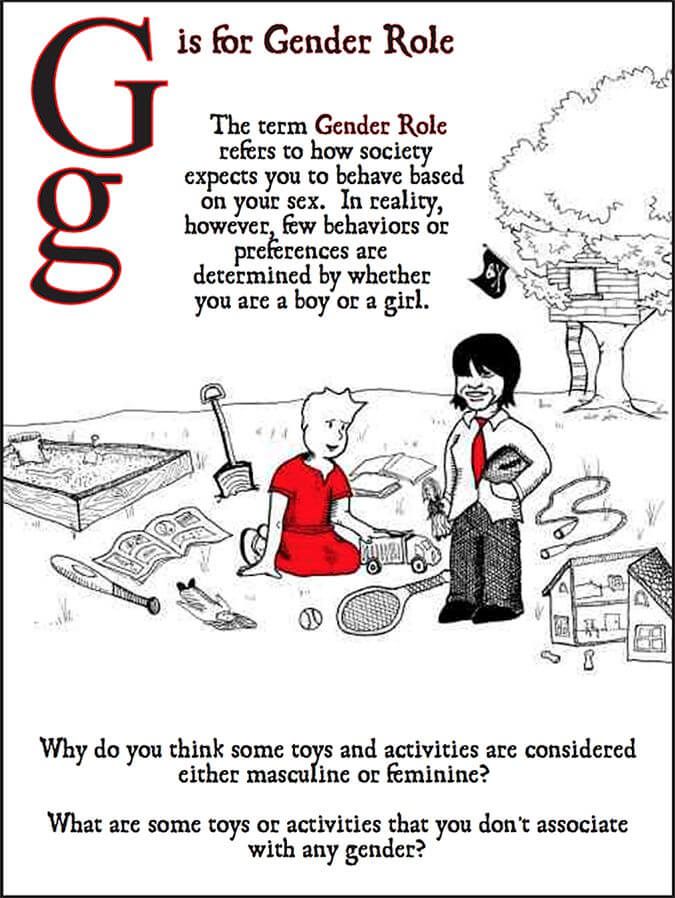
The conventional discourse presents a heteronormative monogamous sexuality and a binary gender narrative for us to follow and punishes those outside the definition, starting at a young age in the school setting. In other words, typically children are still made to perceive that the “right” approach is for a man and a woman to start a relationship, get married, have babies, and live happily ever after — or forever be forsaken.
And yet last year, “1.3 million kids, or roughly 8% of all high school students in America, report being lesbian, gay, or bisexual.”2 That is roughly two kids in every high school classroom in America who openly report being LGBT. Despite this, “in some parts of the country there are laws that forbid teachers to talk about gay and transgender people in a positive way in the classroom”3 and of the 1.6 million homeless teens in America today, “forty percent of them identify as LGBT,” nearly half of them “ran away because of family rejection of their sexual orientation or gender identity.”4 Not only are our school systems ignoring this population of our community that clearly need support, but in some cases, we have gone as far as to create laws forbidding teachers from supporting them.
Our Bodies
Conventional schools dictate from powerful adult authority, even ruling, over children’s own bodies. They reinforce this in school on a daily basis by dictating at what times children may be physically active at recess, at what times they may eat, and even if they are allowed to use the toilet. At the same time the topics of sexuality and gender, and even the vocabulary and curiousness around these ideas, are typically forbidden in the school environment. In my interview with Professor Claudia Sofía Garriga-López, a doctoral candidate in American studies at New York University who focuses her study on transgender feminist activism, she said this about the common schooling environment:
That combination of denying children sexuality and giving somebody an enormous amount of power over children is a combination that is susceptible precisely to sexual misconduct... to not talk to children about how to, for example, talk about their sexuality means not knowing how to explain when somebody has touched them in a way that they don’t want.

Asking for consent, understanding the messages one’s own body is giving off with regards to comfort or discomfort in certain situations, and even going against one’s own well-being when confronted by opposing authority are all mixed up in this notion that children are not allowed to be in control of their own bodies for much of their upbringing. With children being raised not to question authority with regard to their own body, we are given one possible explanation as to how so many have fallen victim to power figures in the #metoo movement.
I asked Professor Garriga-López if she felt that it was appropriate and perhaps even imperative for these topics to be discussed in schools. She replied, “I think it’s extremely important for gender and sexual development to be addressed at an early stage, and to inform students about their ability to self-direct their gender and sexual identity.” I pursued her mentioning of self-direction and what she thought about the idea of a Self-Directed Education environment providing a healthier space for children to develop their self identity as compared to conventional schooling. She answered, “The concept of Self-Directed Education is very important in the realm of gender and sexuality because it is precisely in those areas where young people should be encouraged develop according to their own inclinations and self perceptions, instead of being defined and spoken for by others.”
(What’s So Funny ’Bout) Peace, Love & Masculinity
I was listening to WNYC’s Weekend Edition on National Public Radio while making breakfast about a week ago. I had been researching this article and interviewing people for a couple of weeks. On came the journalist Lulu Garcia-Navarro. When she announced that she was going to interview comedian Michael Ian Black, I perked up, having been a fan of The State, a comedy sketch television series from the 90s that Black was a big part of. I was surprised to hear that the interview was not about comedy at all, but rather, it was on Black’s perception that “boys are broken.”
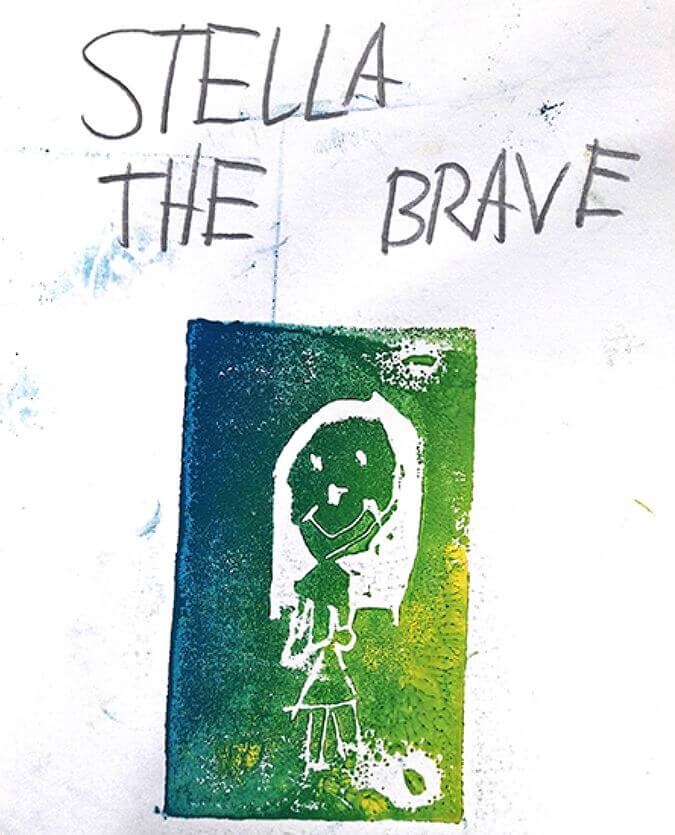
Black was reacting to the recent school shooting in Parkland, Florida that left seventeen people dead. As Garcia-Navarro stated, “[Black] began by writing, deeper than even the gun problem is this – boys are broken.” To this Black explained, “there is something going on with American men that is giving them the permission and space to commit violence. And one of the main things we focus on correctly is guns and mental health, but I think deeper than that is a problem, a crisis in masculinity.”5
In an Op-Ed piece in the New York Times later in the week, Black expanded, “The past 50 years have redefined what it means to be female in America. Girls today are told that they can do anything, be anyone... Boys, though, have been left behind.” He goes on to explain, “Too many boys are trapped in the same suffocating, outdated model of masculinity, where manhood is measured in strength, where there is no way to be vulnerable without being emasculated, where manliness is about having power over others.” Black ties this masculine crisis even further to abuses in schools, “School shootings are only the most public of tragedies. Others, on a smaller scale, take place across the country daily; another commonality among shooters is a history of abuse toward women.” Again, we find an example of conventional development corroding one’s perception of sexuality and gender, resulting in, as Black describes it, “only two choices: withdrawal or rage.”6
The Early History of Sexuality and Gender in Self-Directed Education
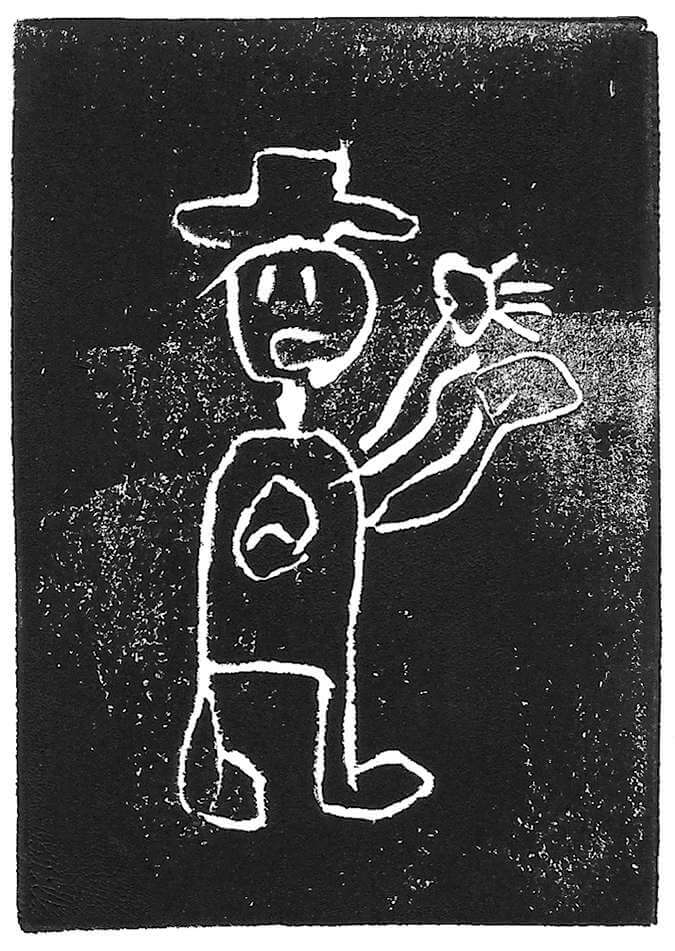
I would like to propose a third choice to Michael Ian Black’s list, one that I believe already exists; that is, environments that are safe and welcoming for children to grow and develop in as whole beings, including their sexuality and gender perceptions. Places where they are accepted no matter how far they fall outside the norms of society. I believe that Self-Directed Education communities — including schools, centers, and unschooling households — are places where children can find not only acceptance but celebration of themselves as people, as whole, healthy human beings, and they have been doing so for the last century.
What we refer to today as Self-Directed Education dates back to 1805, when the Swiss educational reformer Johann Pestalozzi opened the Institute at Yverdon which was then termed “libertarian” education (lowercase “l,” as in the philosophy, not the political movement). Self-Directed Education started to take up opposition with societal norms with regard to gender and sexuality roughly one hundred years later. While in exile in France in the late 1800s, the anarchist educator and activist Francisco Ferrer y Guardia was regarded as a “pioneer of the birth-control movement,”7 following in the path of the French early feminist and libertarian educator, Paul Robin among others. As I have mentioned in a previous article, later Ferrer founded La Escuela Moderna, a secular co-education school of boys and girls that promoted feminism during a time when a disapproving Catholic church ruled Spain. This ultimately led to Ferrer’s execution at the hands of the State.
This was an especially important movement because such ideas continued to be promoted in Self-Directed Education schools across the ocean, when activists, such as the famous anarchist writer Emma Goldman became involved in the Ferrer-inspired Modern Schools. At the turn of the twentieth century, Goldman, “became a spokesperson for birth control reform, sex education, and the free-love movement”8 generations earlier than such sentiments caught on to a larger counterculture movement. The New York Modern School’s approach to the topic of sexuality itself is perhaps best summed up in the words of William Durrant, one of the school’s early principals:
All questions, however, must be fully aired, not least the question of sex: “‘Where do I come from?’ asks the child, puzzling at once both theology and science; ‘who made me?’ We lie to it as well we can; we mutter infantile futility about storks and Indians and doctors with a whim for bringing babies to unwilling parents; but we know, every one of us, that it were better to tell the truth at once than to wait for it to come later from sources that defile it in the giving. But we are so morally corrupt that we look upon sex as an indecent thing.7
These schools were amazingly engaging children in topics such as women’s equality and contraception as early as the turn of the twentieth century.
About a decade later, a substantial impact on the views of sexuality and gender and its implications on self-directed environments began with conversations in England between an American named Homer Lane and a Scotsman named Alexander Sutherland Neill. Lane founded the Little Commonwealth in 1913, a co-ed community where he “pioneered what later we came to know as ‘group therapy’ and ‘shared responsibility.’”9 Neill founded Summerhill, the famous democratic school, eight years after Lane’s community started, very much inspired by what he saw at the Little Commonwealth, as is described throughout many of Neill’s books. Most notable was Lane’s influence on Neill in using therapy as a technique with children.
Reich and Neill
This ultimately led Neill to the work of Dr. Wilhelm Reich, an Austrian psychoanalyst who studied under Sigmund Freud. “Reich became known as one of the most radical figures in the history of psychiatry,” claiming to have “discovered a biological or cosmic energy, an extension of Freud’s idea of the libido”10 that Reich called Orgone energy, and with it Reich professed the need for sexual liberation. To explain this further, as well as Reich’s influence on Neill, I interviewed Dr. Harry Lewis, an Orgone therapist who has been practicing in New York City for the past 36 years.
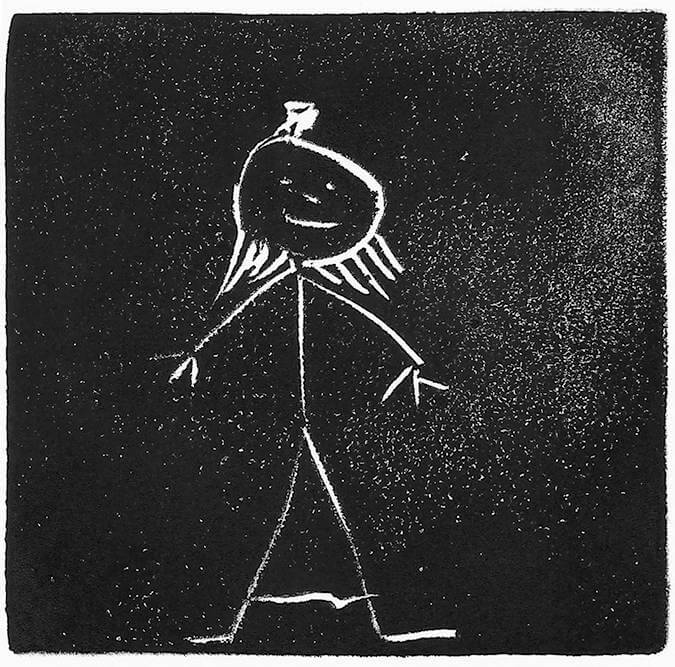
Neill and Reich “met in 1936,” according to Lewis. “Neill went to Oslo for a conference, heard about and met Reich and went into treatment with him briefly. ... [Neill] went back a few times for treatment and they became close associates and friends.” Reich’s psychotherapy practices involved talking to patients, as Freud and others had been practicing, but to also use the unprecedented method of touching patients during therapy for the purposes revealing one’s “muscular armor,” the way one holds oneself due to persistent repression of emotions, a practice looked down upon by psychoanalysts at the time. Lewis explains this armor and how it impacted Neill:
To express one’s natural sexual energy, sexual impulse and desire to make contact gets filtered through armor. Restriction both physically as well as emotionally as well as behaviorally, and intellectually. So society, through the parents and then through peers and then from the school, reinforced that... [Neill’s] impulse was to allow children to experience an environment where they don’t become as armored. Now Neill always complained that the problem with Summerhill was that by the time you got the kids that came to Summerhill, they were pretty damaged. So a lot of the work at Summerhill, at least when Neill was there, was really to repair, and getting kids who were often very damaged on a lot of different levels to function somewhat independently and freely, and to be healthy.
According to Dr. Lewis, however, Neill and Reich developed a difference of approach:
Reich was very strong in asserting that Neill and Summerhill should be advocating for and supporting one’s own childhood and young adolescent sexuality and that they should be introducing contraception. And Neill was adamantly against it, not because he was opposed to it but because he felt that they were going to get shut down. [Neill] said, “If we go there, if we openly support sexual freedom, sexual revolution, we’re done.”
Unfortunately, Reich’s influence on Neill is nearly missing in its entirety in Neill’s books. Just as Neill’s cultural impact grew, sadly Reich’s diminished, as his views, being too radical for the psychoanalytic field, drove him into infamy. Ultimately Reich died in jail and many of his books were burned by the U.S. government. Neill’s publishers encouraged him to strike Reich’s name from his books, which Neill only did when Reich encouraged him to do so.11 Nonetheless, his influence on Neill survived and Summerhill continued on, having a huge effect on the world. In a period of five years (1967 to 1972) the number of free schools in the United States grew exponentially “from around 25 to perhaps 600; around 200 [in 1972] alone.”12
The worldwide ripple effects of Summerhill and A. S. Neill’s writing — and therefore Neill’s predecessors and influences such as Reich and Lane — are quite clear. The various models of Self-Directed Education that were influenced by this one school include the Sudbury Valley School and its many offshoots, the entire free school movement, and the unschooling movement.
In this column’s article next month, we’ll take a look at the impact of Self-Directed Education with regard to sexuality and gender on individuals in contemporary society.
[1] Robinson, Kerry H. Innocence, Knowledge and the Construction of Childhood: The contradictory nature of sexuality and censorship in children’s contemporary lives, Routledge, 2013.
[2] Schlanger, Zoë. “A teen health survey crucial to US public policy is finally asking kids about their sexual orientation.” Quartz, June 25, 2017, https://qz.com/1014142/a-teen-health-survey-crucial-to-us-public-policy-is-finally-asking-kids-about-their-sexual-orientation/. Accessed February 25, 2018.
[3] Greenberg, Zoe. “When a Student Says, ‘I’m Not a Boy or a Girl'” The New York Times, October 24, 2017. https://www.nytimes.com/2017/10/24/well/family/transgender-gender-nonbinary-students.html. Accessed February 25, 2018.
[4] Seaton, Jaimie. “Homeless rates for LGBT teens are alarming, but parents can make a difference.” The Washington Post, March 29, 2017. https://www.washingtonpost.com/news/parenting/wp/2017/03/29/homeless-rates-for-lgbt-teens-are-alarming-heres-how-parents-can-change-that/. Accessed February 25, 2018.
[5] Weekend Edition Sunday. “Michael Ian Black On Why ‘Boys Are Broken.'” National Public Radio, February 18, 2018. https://www.npr.org/2018/02/18/586888452/michael-ian-black-on-why-boys-are-broken. Accessed February 25, 2018.
[6] Black, Michael Ian. “The Boys Are Not All Right.” The New York Times Op-Ed, February 21, 2018. https://www.nytimes.com/2018/02/21/opinion/boys-violence-shootings-guns.html. Accessed February 25, 2018.
[7] Avrich, Paul, The Modern School Movement: Anarchism and Education in the United States, Princeton University Press, 1980.
[8] Dubh, Dearg. “Introduction to Emma Goldman’s Living my life – Miriam Brody.” libcom.org, September 11, 2006. https://libcom.org/library/introduction-emma-goldmans-living-my-life-miriam-brody. Accessed February 25, 2018.
[9] Smith, Mark K. “Homer Lane and the Little Commonwealth.” infed, 1999. http://infed.org/mobi/homer-lane-and-the-little-commonwealth/. Accessed February 25, 2018.
[10] Wikipedia. “Wilhelm Reich.” https://en.wikipedia.org/wiki/Wilhelm_Reich. Accessed February 25, 2018.
[11] from my interview with Dr. Harry Lewis
[12] Allen Graubard, “The Free School Movement,” Harvard Educational Review, Volume 42, Issue 3, September 1972.
If you enjoyed this article and feel called to give back to ASDE, here are ways you can support our work:
- Donate money
- Share our content with others! Click one of the buttons above to easily share on Twitter, Facebook, or email.
- Consider becoming a Contributor for Tipping Points
Tipping Points Magazine amplifies the diverse voices within the Self-Directed Education movement. The views expressed in our content belong solely to the author(s). The Alliance for Self-Directed Education disclaims responsibility for any interpretation or application of the information provided. Engage in dialogue by reaching out to the author(s) directly.


